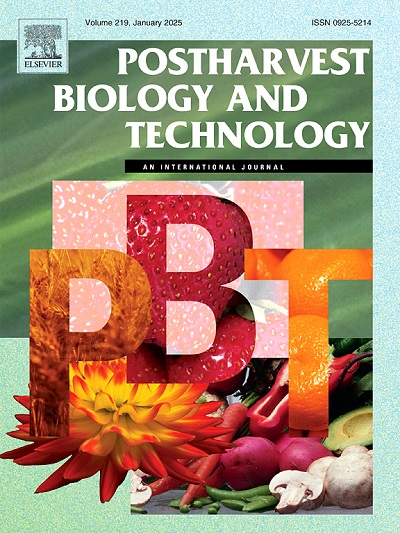Enhancing Rubus idaeus L. maturity detection and classification: A YOLO-CG-CPCA network model for efficient feature extraction and precise analysis
IF 6.8
1区 农林科学
Q1 AGRONOMY
引用次数: 0
Abstract
Accurate and efficient identification of Rubus idaeus L. (raspberry) ripeness remains a challenging task due to subtle maturity variations and complex natural environments. This study focuses on improving the accuracy and efficiency of Rubus idaeus L. ripeness classification by developing an improved YOLOv8 model. A standardized dark-box imaging system was developed and employed based on mobile imaging to ensure high consistency and stability in image acquisition. To address fine-grained ripeness differences, a C2f-ContextGuided module was incorporated. It enhances both local and global feature extraction, improving feature discrimination. Additionally, a Channel Prior Convolutional Attention mechanism was introduced to highlight key information in the feature maps. The Wise-IoUv2 loss function was also integrated to improve localization robustness. Experimental results indicate that the proposed YOLO-CG-CPCA model outperformed the baseline YOLOv8s by 3.0 % in mean Average Precision. Moreover, it achieved relative improvements of 1.8 %, 0.9 %, 0.9 %, 2.5 %, and 1.5 % over Faster R-CNN, YOLOv5s, YOLOv7-Tiny, YOLOv10s, and YOLOv11s, respectively. In conclusion, the proposed model significantly enhances the accuracy and efficiency of Rubus idaeus L. ripeness identification. It offers technical support for intelligent post-harvest grading and provides a reference for the automated detection of other small fruits and vegetables, such as strawberries and blueberries.
基于YOLO-CG-CPCA网络模型的野毒草成熟度检测与分类研究
由于覆盆子成熟度变化微妙,自然环境复杂,对覆盆子成熟度的准确、高效鉴定仍然是一项具有挑战性的任务。本研究旨在通过建立改进的YOLOv8模型,提高野田鼠成熟度分类的准确性和效率。为保证图像采集的高一致性和稳定性,开发并采用了基于移动成像的标准化黑箱成像系统。为了解决细粒度的成熟度差异,引入了C2f-ContextGuided模块。增强了局部和全局特征提取,提高了特征识别能力。此外,引入了通道先验卷积注意机制来突出特征映射中的关键信息。还集成了Wise-IoUv2损失函数,以提高定位鲁棒性。实验结果表明,该模型的平均精度比基线的YOLOv8s高出3.0 %。与Faster R-CNN、YOLOv5s、YOLOv7-Tiny、YOLOv10s和YOLOv11s相比,分别实现了1.8 %、0.9 %、0.9 %、2.5 %和1.5 %的相对改进。综上所述,所建立的模型显著提高了野刀草成熟度鉴定的准确性和效率。为收获后智能分级提供技术支持,为草莓、蓝莓等其他小型果蔬的自动化检测提供参考。
本文章由计算机程序翻译,如有差异,请以英文原文为准。
求助全文
约1分钟内获得全文
求助全文
来源期刊

Postharvest Biology and Technology
农林科学-农艺学
CiteScore
12.00
自引率
11.40%
发文量
309
审稿时长
38 days
期刊介绍:
The journal is devoted exclusively to the publication of original papers, review articles and frontiers articles on biological and technological postharvest research. This includes the areas of postharvest storage, treatments and underpinning mechanisms, quality evaluation, packaging, handling and distribution of fresh horticultural crops including fruit, vegetables, flowers and nuts, but excluding grains, seeds and forages.
Papers reporting novel insights from fundamental and interdisciplinary research will be particularly encouraged. These disciplines include systems biology, bioinformatics, entomology, plant physiology, plant pathology, (bio)chemistry, engineering, modelling, and technologies for nondestructive testing.
Manuscripts on fresh food crops that will be further processed after postharvest storage, or on food processes beyond refrigeration, packaging and minimal processing will not be considered.
 求助内容:
求助内容: 应助结果提醒方式:
应助结果提醒方式:


